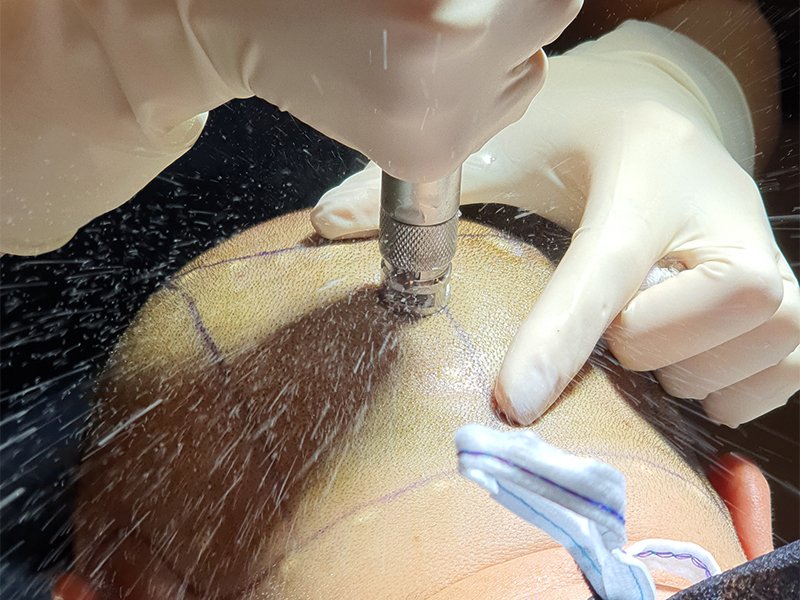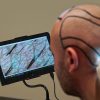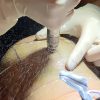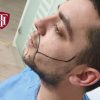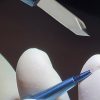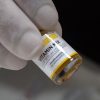Contents
Painless Anesthesia
Painless anesthesia is a technique based on the application of anesthetic drugs to be used during the operation through needleless and painless anesthesia devices, developed with the aim of providing a comfortable operation without discomfort for people who have loss problems of hair and who wish to have a hair transplant.
In recent years, anesthesia was applied with dental tip injectors. Although the needles used were thin, they created additional pain, which reduced the comfort of the operation. This was a problem for people who were afraid of pain or had a phobia of needles.
The logic of work of painless and needle-free anesthesia devices, which eliminates this problem with the developing technology, is close to the base of the guns. The anesthetic substance placed in the device is injected into the tissue by spraying under pressure. As a small dose of anesthetic is sprayed, it spreads over a large area, reducing pain.
Contrary to popular belief, pain does not go away completely during anesthesia. The level of pain felt also varies depending on the person’s pain threshold. The pain does not go away completely, but it does not bother the patient either.
How Painless Anesthesia is applied
Hair transplant operations are performed under local anesthesia. A person’s consciousness is constantly open, except when he sleeps voluntarily.
There are two phases of anesthesia throughout the operation and these phases are completed in a few minutes in total. The first of these is the nape area, which is the area where the hair follicles will be extracted, called the donor area, while the other application area is the recipient area where the follicles will be transferred.
While in recent years anesthetic drugs were administered through injectors and needles to provide anesthesia and decreased intraoperative comfort, today needles have been replaced by special devices that do not have a needle or similar device at the tip, work with pressure and they inject the anesthetic substance into the tissue in the form of a spray.
For people who have a problem of hair loss and who have to live with this problem because they are afraid of pain, and those who have a phobia of needles, needle-free and painless anesthesia devices allow the opportunity to undergo a hair transplant operation.
Painless, needle-free anesthesia devices, which have taken their place in hair transplant operations with developing technology, work with pressure. It injects the anesthetic substance into the tissue by spraying it at high speed with the pressure inside it. Given that the amount of anesthetic drug that is administered is small and is applied by spray, the pain that will be produced does not reach a level that bothers the person because it penetrates a wide area depending on the medication applied.
To avoid a surprise, the important point to know about painless anesthesia is not that nothing is felt during anesthesia, but that there is no pain bothering the person.
After the anesthesia phase, which is completed in a few minutes with painless anesthesia devices, the person does not feel any pain during the operation. Contrary to popular belief, there is no pain after the operation. During the whole hair transplant process (which is about 1 year), the period during which slight pain can be felt is a few minutes.
How long does Painless Anesthesia last?
Throughout the operation, the total duration of the anesthesia that is applied in the recipient area, where the hair follicles will be placed, and that is applied in the area of the neck called the donor area, where the follicles will be extracted, does not exceed 10 minutes. Out of this period, the person does not feel any pain.
How long does the effect of Painless Anesthesia last?
In the painless anesthesia procedure, two different forms of anesthetic fluids are used. The characteristics of these anesthetics used can be summarized as follows;
- The first group of medications is the group that starts acting immediately,
- The second group of medications is the group of drugs that does not show an immediate effect but has a long-lasting action.
In the first stage, pre-anesthesia is applied with the first group of drugs. The goal here is to put the area to sleep immediately. The sooner the area sleeps, the sooner the person will relax psychologically. At this stage, the person may feel slight pain, but this pain is not bothersome. After the first group injection of the medication is finished, the person is in a position where they do not feel any pain.
To provide complete insensitivity, after the administration of the drug of the first group, which has an immediate effect, but a short-lived action, begins. the injection of the drug of the second group, which does not show an immediate effect, but whose effect will continue for a long time, Two groups of drugs are injected by painless anesthesia without needles. While the drug of the second group is injected, the person does not feel anything because he has already had an insensibility. The second group of anesthetic drugs is applied while the effect of the first group continues.
This procedure is applied twice in the operation, once in the donor area (nape area) and another in the transfer area (recipient area). In total, the application time does not exceed 10 minutes, and the application can be interrupted if requested by the person. When the application of the drug from the 2nd group ends, the application area falls asleep completely. The person does not feel any pain.
Who can apply Painless Anesthesia?
In the planning stage of the operation, it is evaluated if the people are suitable for the operation. At this stage, painless anesthesia can be applied to anyone who does not have a problem that prevents them from undergoing a hair transplant operation. The app has no age limit.
Is hair transplant a painful procedure?
In the past, before the use of painless anesthesia devices, anesthesia was provided with the help of needles before the operation. In fact, the operation was not considered very comfortable. But today, with painless anesthesia machines taking over this stage, definitive pain solutions have been produced. People do not need to worry about pain.
What is sedation?
Sedation is a treatment procedure applied to people who have a phobia of needles or who were hesitant due to severe pain before the invention of painless anesthesia devices. Prior to application of anesthesia, the person was placed in a semi-sleep state with anesthetic medication administered intravenously, and local anesthesia was applied before the end of semi-sleep. Once the local anesthesia procedure is finished, the person would wake up and the operation would continue. However, for this procedure to be carried out, people should not eat or drink anything from the night before and go to the operation on an empty stomach. Although the application of sedation increased the person’s comfort by eliminating the pain felt, the operation was difficult after the person’s body energy was low. This problem has been completely eliminated with painless anesthetic applications.
Sedation or Painless Anesthesia?
Sedation is actively applied in almost all fields of health and surgery. People need energy when hair transplant operations are of long duration. The first condition of sedation is not to eat or drink anything from the night before. If the person consciously or unconsciously ate or drank anything the night before the operation, sedation is very risky. Although a meal break is given as standard during the operation, the person must continue on an empty stomach until then. This greatly affects the comfort of operation.
In the anesthesia phase with the help of painless anesthesia devices, the person does not need to stop eating or drinking, even a healthy breakfast is recommended in the morning on the day of the operation. As the application will be local, there is no problem in the rest of the body.
Painless Anesthesia in Hair Transplant
Hair transplant operations are performed under local anesthesia with painless anesthesia devices to increase the comfort of the operation and preserve the person’s body energy. The person’s consciousness is constantly open. Anesthesia is applied only to the area to be studied.
Painless Anesthesia Prices
There is no additional charge for painless anesthesia applied during the operation. Painless anesthesia is included in all standard hair transplant packages. You can get detailed information about the current fees for hair transplant operations here.






